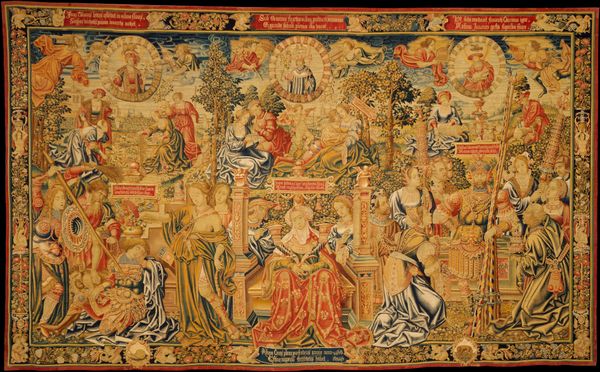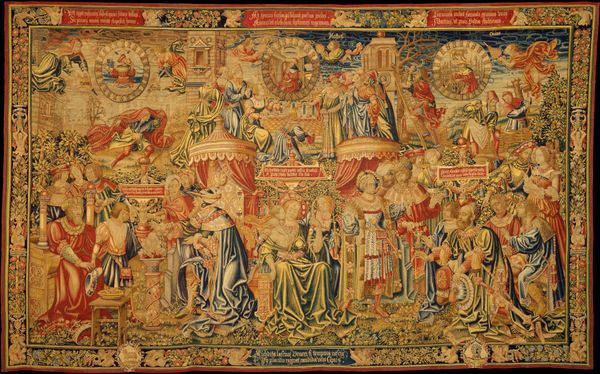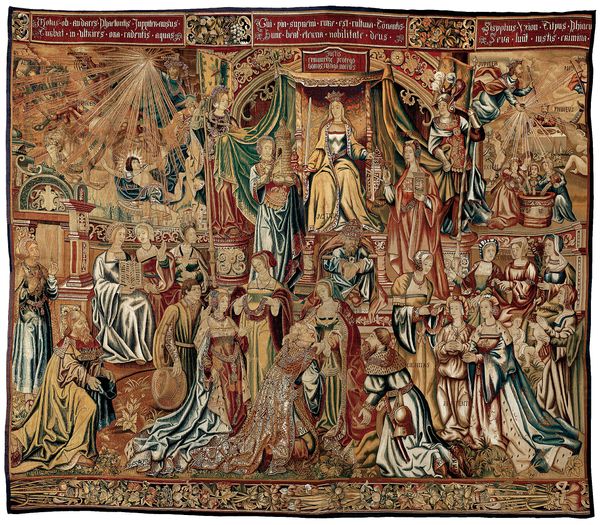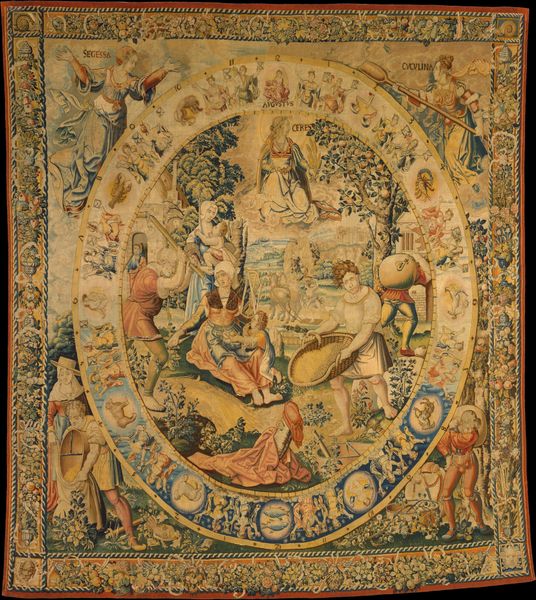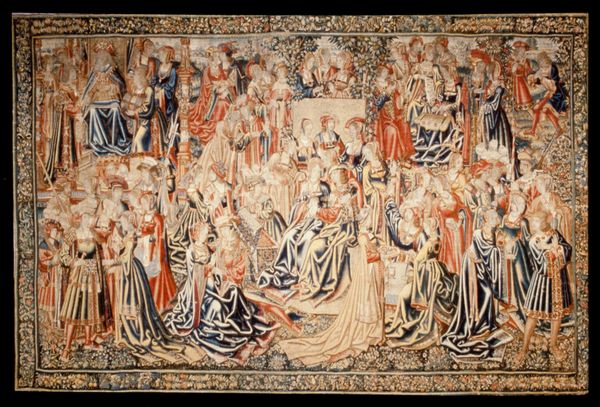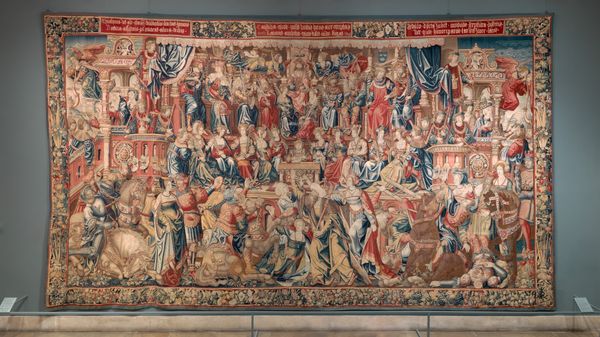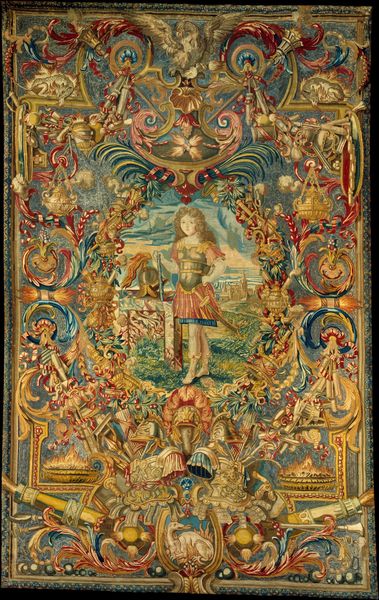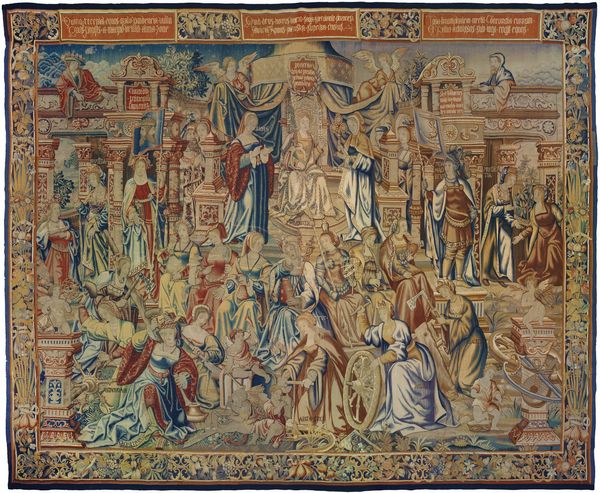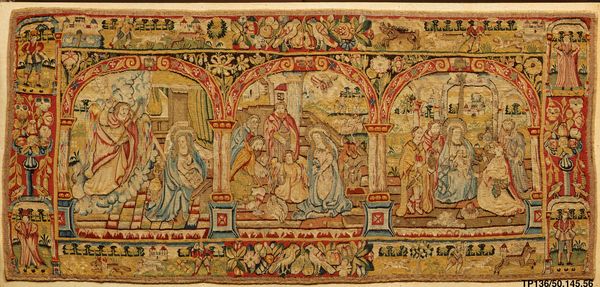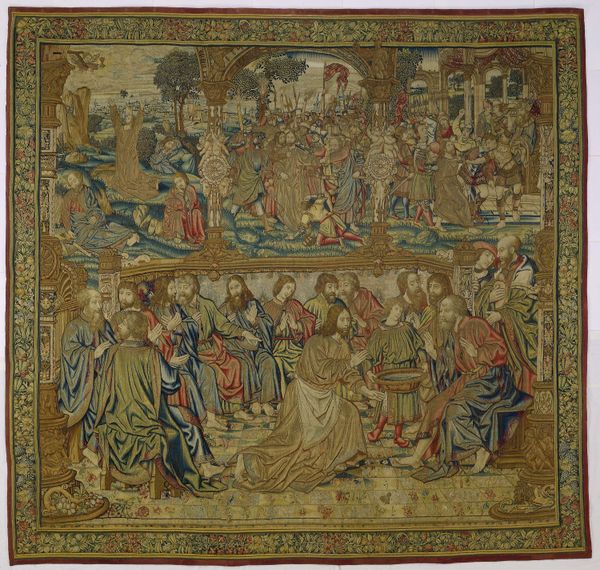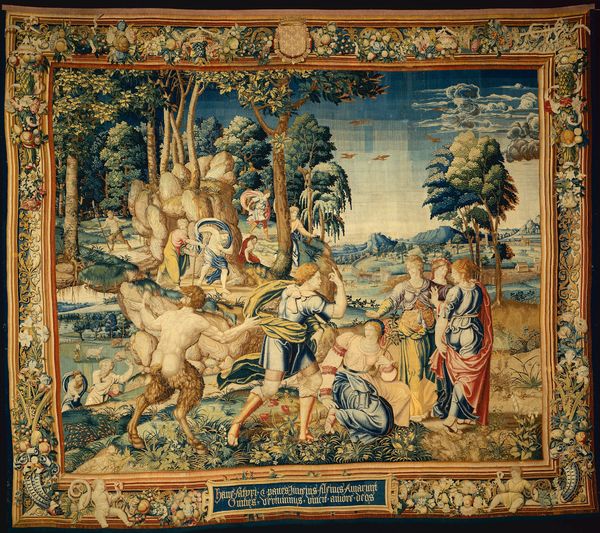
The Twelve Ages of a Man: The Second Three Ages (18-36), or Autumn 1510 - 1520
0:00
0:00
textile
#
medieval
#
allegory
#
textile
#
figuration
#
history-painting
#
northern-renaissance
#
decorative-art
Dimensions: H. 175 x W. 286 inches (444.5 x 726.4 cm)
Copyright: Public Domain
Editor: Here we have Bernard van Orley’s tapestry, "The Twelve Ages of a Man: The Second Three Ages (18-36), or Autumn," created sometime between 1510 and 1520. It's overwhelming in detail, like a snapshot of a very busy society. What strikes me most is the stratification; different groups engaged in disparate activities. How do you interpret this work? Curator: Well, you’ve already touched on the layered societal dynamics, which is a great entry point. Tapestries like this weren’t just decorative; they were powerful status symbols and narratives, reinforcing societal norms. Notice how the figures are grouped and what activities they’re engaged in. Who is included, and, just as importantly, who is excluded from these depictions of "the ages of man"? Editor: I see… the wealthier figures are prominently displayed, participating in leisure and intellectual pursuits, while others seem to be laboring. Is this a deliberate commentary on social hierarchy? Curator: Absolutely. Van Orley isn't simply depicting life; he's constructing a vision of it that validates existing power structures. Think about who this tapestry was likely made for, and how they would have perceived this representation of their world. Consider the relationship between art and power at the time. Do you see parallels to the ways media operates today, constructing and reinforcing specific narratives? Editor: That's a really interesting connection. I hadn't considered the role of art as propaganda in that way. It’s also eye-opening to see how certain power structures have been persistent for centuries. Curator: Exactly. By interrogating these historical artworks, we can understand the long trajectory of social inequalities and how visual culture plays a role in perpetuating or challenging them. I hope reflecting on tapestries like this leads to critical dialogues on media literacy and social justice today. Editor: Definitely, it makes me look at historical artwork with fresh eyes. Thank you.
Comments
No comments
Be the first to comment and join the conversation on the ultimate creative platform.
